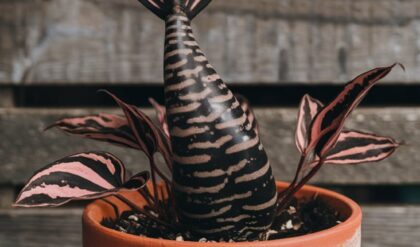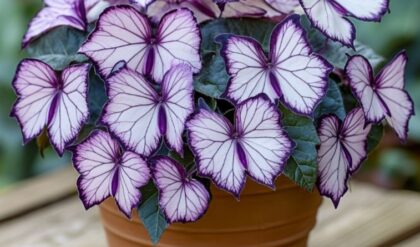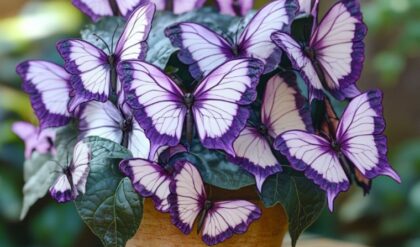Growing a Magnolia tree can be a rewarding endeavor, as it not only adds beauty to your landscape but also provides an array of benefits—from attracting pollinators to creating shade. With their stunning blossoms and glossy foliage, magnolias have long captivated gardeners across various climates. However, cultivating these majestic trees requires a nuanced understanding of their needs and ecology.
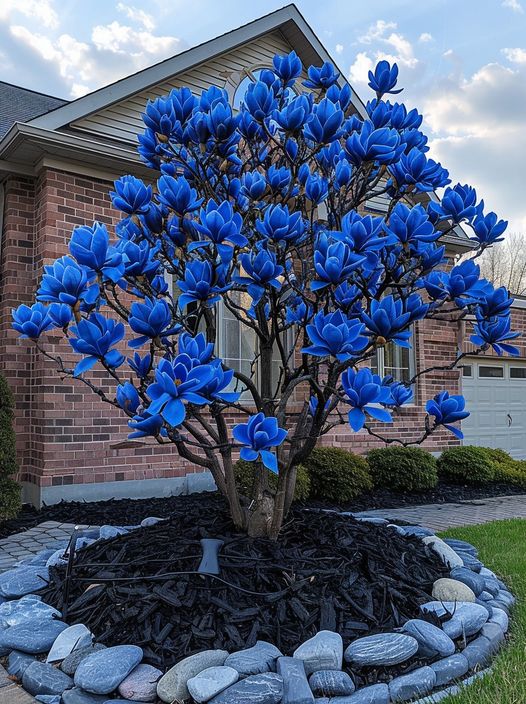
Understanding the Magnificent Magnolia
Magnolias belong to one of the oldest families of flowering plants, which suggests that they have adapted remarkably well over time. The allure of magnolias lies not just in their aesthetic appeal but also in their diversity—ranging from deciduous to evergreen varieties, and each type possesses unique characteristics and care requirements.
The Allure of Deciduous Magnolias
Deciduous magnolias, such as the beloved Saucer Magnolia (Magnolia x soulangeana), are known for their dramatic spring blooms. These trees shed their leaves in the fall, allowing for a stunning floral display that heralds the arrival of warmer weather. The delicate, cup-shaped flowers in shades of pink, white, or purple are a sight to behold, captivating passersby and providing a breathtaking focal point in any garden.
The Charm of Evergreen Magnolias
In contrast, evergreen magnolias like the Southern Magnolia (Magnolia grandiflora) maintain their glossy, dark green foliage throughout the year. These stately trees are prized for their year-round visual interest and their ability to provide dense shade and privacy. The large, fragrant white flowers that emerge in summer only add to the allure of these majestic specimens.
Embracing the Diversity of Magnolias
Regardless of whether you prefer deciduous or evergreen varieties, the world of magnolias offers a rich tapestry of choices. From the compact and delicate Star Magnolia (Magnolia stellata) to the towering and impressive Bigleaf Magnolia (Magnolia macrophylla), there is a magnolia to suit every landscape and climate. Understanding the unique characteristics of each type can help you select the perfect magnolia to grace your garden.
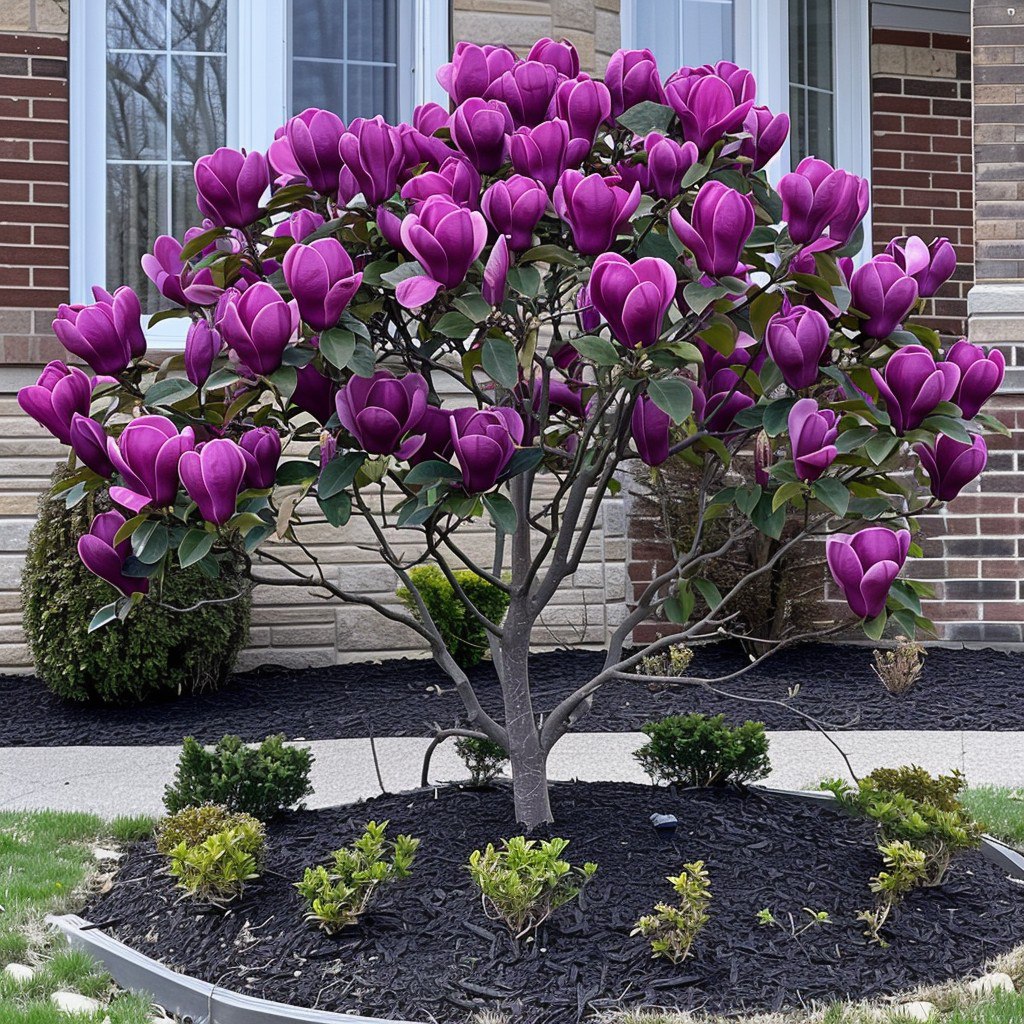
Site Selection: Finding Their Perfect Spot
When planning to grow a magnolia tree, it’s crucial to consider its ideal location. Generally, magnolias thrive in full sun to partial shade, with a preference for well-drained soil that is rich in organic matter. However, it’s essential to note that while they prefer sunny positions, some varieties can tolerate a bit of shade, particularly in hotter climates.
Evaluating Sunlight Needs
Magnolias are adaptable to a range of light conditions, but they generally perform best in full sun to partial shade. In areas with intense summer heat, providing some afternoon shade can help mitigate stress and prevent leaf scorch. Conversely, in cooler climates, magnolias may benefit from a sunny, south-facing exposure to maximize their growth and flowering potential.
Assessing Soil Drainage
Proper soil drainage is essential for the health and longevity of magnolia trees. These plants thrive in well-draining, acidic soils that are rich in organic matter. Poorly drained or heavy clay soils can lead to root rot and other issues, so it’s crucial to amend the soil before planting to improve its structure and drainage.
Considering Slope and Microclimates
The ideal planting site for a magnolia should have a gentle slope or be situated on a rise to promote natural drainage. Avoid low-lying areas or depressions where water can collect and stagnate. Additionally, be mindful of microclimates within your landscape, as these can affect the growing conditions for your magnolia tree. Sheltered areas, for instance, may provide protection from harsh winds and temperature fluctuations.
Soil Preparation and Planting Techniques
Soil quality plays a pivotal role in the successful growth of magnolias. Before planting, it’s essential to amend the soil to ensure it meets the specific needs of these majestic trees.
Amending the Soil
Magnolias thrive in well-drained, nutrient-rich soil that is slightly acidic, with a pH range of 5.0 to 6.5. To achieve this ideal soil composition, incorporate generous amounts of organic matter, such as compost or well-rotted manure, into the planting area. This will not only improve drainage but also enhance the soil’s fertility and water-holding capacity.
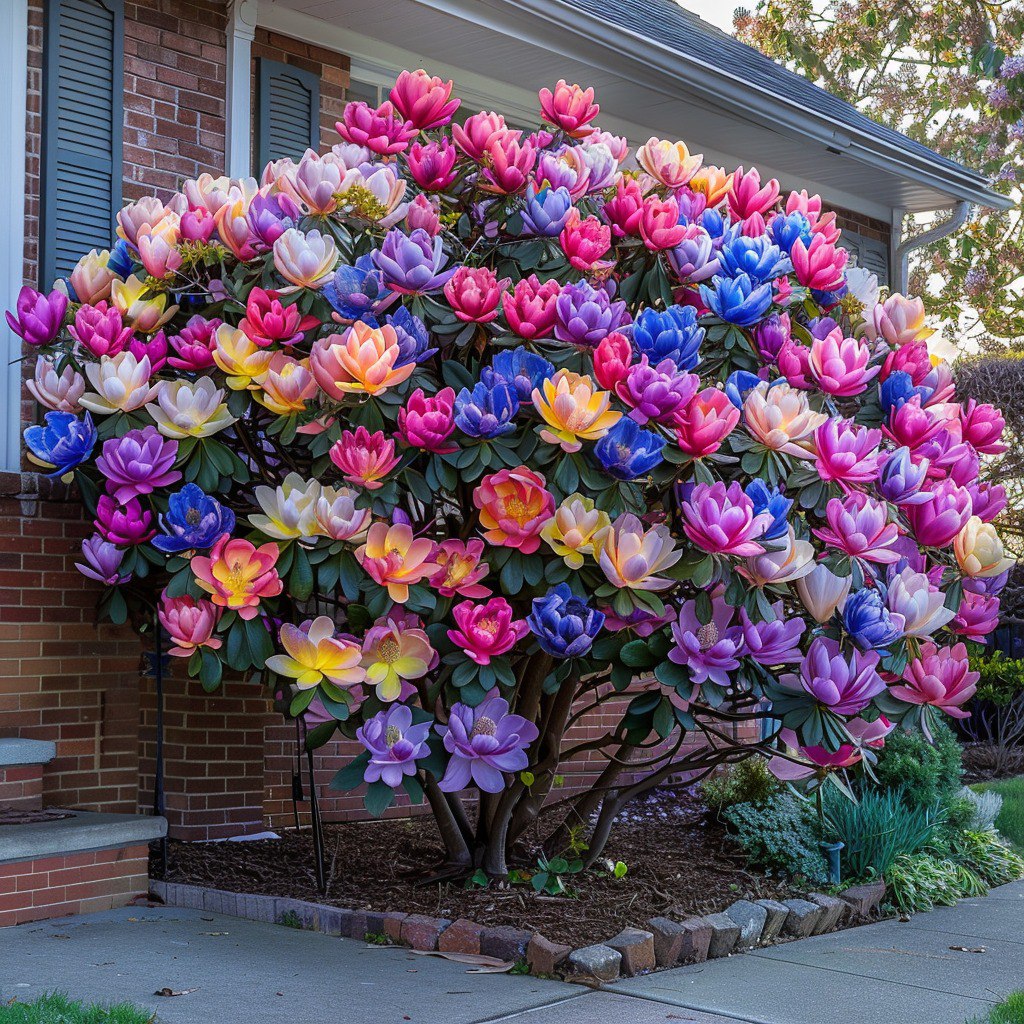
Preparing the Planting Hole
When it comes to planting, the size and depth of the hole are crucial factors. Dig a hole that is twice as wide as the root ball but no deeper than the root ball itself. This will allow the roots to spread out horizontally, promoting a stable and well-anchored tree. Avoid planting the tree too deep, as this can lead to issues like trunk rot or poor drainage.
Ensuring Proper Planting Depth
As you place the magnolia tree in the planting hole, ensure that the top of the root ball is level with the surrounding soil. This will prevent the trunk from being buried, which can lead to rot and other problems. Gently backfill the hole with the original soil, taking care not to compact it too heavily.
Staking and Guiding Young Trees
In some cases, especially with larger or top-heavy magnolia trees, staking may be necessary to provide support and prevent wind damage during the establishment phase. However, it’s important to remove the stakes after the first year to allow the tree to develop its own structural strength.
Watering and Mulching: Nurturing Young Trees
Establishing a regular watering regimen is vital after planting. Newly planted magnolia trees require consistent moisture to develop a strong root system, especially during their first few years.
Watering Needs
During the first year after planting, water the magnolia tree deeply and thoroughly, ensuring that the soil remains consistently moist but not waterlogged. Aim to provide about 1 to 2 inches of water per week, adjusting as needed based on rainfall and soil conditions. As the tree matures, gradually reduce the frequency of watering, but maintain soil moisture during dry spells.
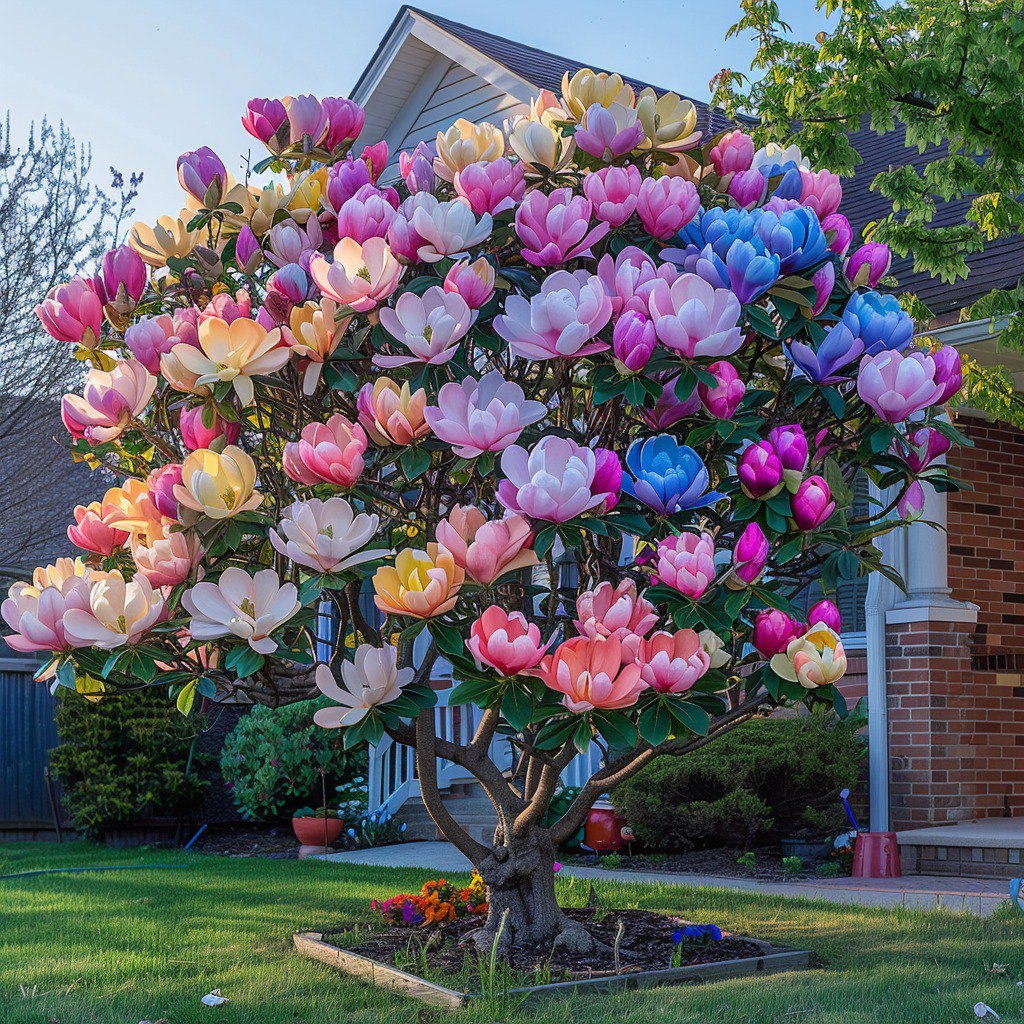
The Benefits of Mulching
Using mulch around the base of the magnolia tree can provide numerous benefits. Organic mulches, such as shredded bark or wood chips, help retain soil moisture, suppress weeds, and regulate soil temperature. As the mulch decomposes, it also gradually improves the fertility and structure of the soil, creating an optimal growing environment for the tree’s roots.
Maintaining the Mulch Layer
When applying mulch, aim for a depth of 2 to 4 inches, taking care to keep it a few inches away from the trunk to prevent moisture buildup and potential rot. Replenish the mulch layer as needed, typically once or twice a year, to maintain its effectiveness.
Pruning and Maintenance: Shaping Your Tree
Magnolias generally demand minimal pruning, but occasional maintenance can promote better air circulation and sunlight penetration within the canopy.
Timing is Key
The best period to prune a magnolia tree is late winter or early spring, before the tree begins to leaf out. This ensures that the cuts heal quickly and do not interfere with the upcoming blooming season. Avoid pruning during the active growing season, as this can stress the tree and potentially disrupt its natural flowering cycle.
Selective Pruning Techniques
When pruning, focus on removing any dead, damaged, or crossing branches to maintain a clean and well-structured canopy. Avoid cutting off the tree’s central leader, as this can result in an undesirable, multi-trunked form. Instead, selectively thin out inner branches to improve air flow and light penetration, which can enhance flowering and overall tree health.
Monitoring for Pests and Diseases
Magnolias can be susceptible to various pests and diseases, such as scale insects, leaf scorch, and fungal infections. Regularly inspecting your tree for any signs of issues and addressing them promptly can help prevent serious problems from developing. If you notice any concerning symptoms, consult with a local arborist or horticulturist for guidance on appropriate treatment options.
The Broader Implications of Growing Magnolias
Cultivating a magnolia tree is more than just an aesthetic choice; it weaves into broader ecological narratives. Such trees support local ecosystems by providing habitats for birds and pollinators. In urban settings, their presence can help mitigate heat island effects and improve air quality. Furthermore, the act of nurturing a tree invites contemplation on sustainability and environmental stewardship—a reminder of our responsibility towards nature.
Fostering Biodiversity
Magnolias are beloved by a wide range of wildlife, from birds and butterflies to small mammals. By planting a magnolia tree, you’re creating a valuable habitat that can attract and support diverse species, contributing to the overall biodiversity of your local ecosystem.
Mitigating Urban Heat Island Effects
In urban areas, the presence of large, canopy-forming trees like magnolias can help mitigate the heat island effect. These trees provide cooling shade, evapotranspiration, and increased reflectivity, which can help lower ambient temperatures and reduce energy demands for cooling buildings.
Cultivating Environmental Stewardship
The act of nurturing a magnolia tree can also foster a deeper connection to the natural world and a sense of environmental stewardship. Watching a tree grow from a sapling to a majestic specimen can inspire a sense of wonder and appreciation for the cycles of nature, ultimately encouraging individuals to become more engaged in sustainable practices and conservation efforts.
Conclusion
Growing a magnolia tree can be a truly rewarding experience, offering a blend of aesthetic beauty, ecological benefits, and personal fulfillment. By understanding the unique needs and characteristics of these magnificent plants, gardeners can create thriving sanctuaries that not only enhance their own landscapes but also contribute positively to the broader environment. Whether you choose a stately evergreen or a delicate deciduous variety, the magnolia’s timeless charm and adaptability make it a worthy addition to any garden or urban setting. So, embrace the opportunity to cultivate these living legacies, and witness the transformative power of these botanical marvels as they take root and flourish in your own backyard. Back Viết tiếpNext
